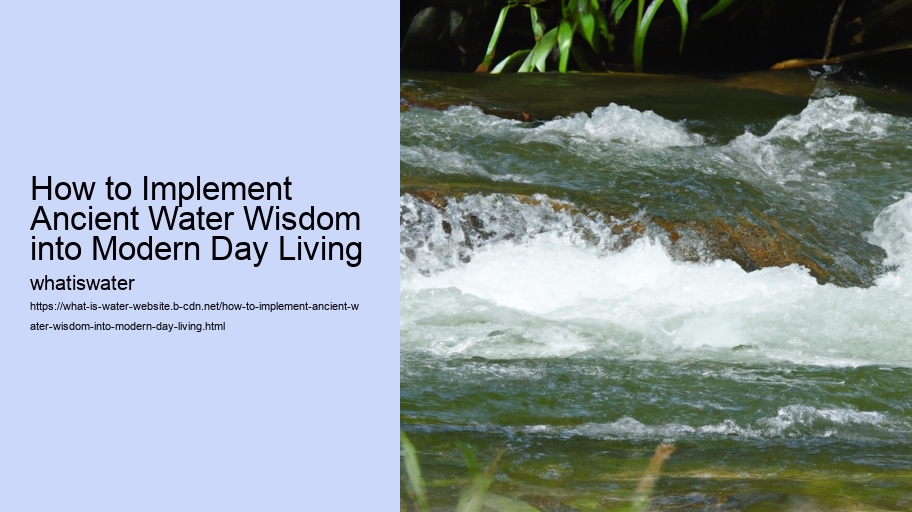How to Implement Ancient Water Wisdom into Modern Day Living - Rivers and Lakes
**Implementing Ancient Water Wisdom in Today's World**
As we confront mounting water scarcity and environmental concerns, revisiting ancient water management techniques can provide invaluable insights for sustainable living. Civilizations throughout history have thrived by ingeniously managing this precious resource, often through harmonious practices with nature.
One key aspect of ancient water wisdom is the recognition of water as a shared community resource, not merely a commodity.
How to Implement Ancient Water Wisdom into Modern Day Living - H2O
- Aquifers
- Water Efficiency
- Water Filtration
- Thermal Pollution
How to Implement Ancient Water Wisdom into Modern Day Living - Irrigation
- Desalination
- Aquifers
- Water Efficiency
- Water Filtration
- Thermal Pollution
- Water Footprint
Moreover, ancient systems frequently utilized gravity-fed irrigation and rainwater harvesting methods. These low-tech solutions minimized energy consumption compared to contemporary high-powered pumps. Virtual Water By incorporating similar gravity-based strategies and reviving rainwater collection practices within urban design—such as green roofs and permeable pavements—we can reduce our reliance on processed municipal supplies while replenishing groundwater reserves.
Terracing is another practice from antiquity that can be adapted today to combat soil erosion and optimize irrigation efficiency in agriculture.
How to Implement Ancient Water Wisdom into Modern Day Living - Water Cycle
- Hydroponics
- Desalination
- Aquifers
- Water Efficiency
The ancients also understood the importance of wetland conservation for maintaining ecological balance.
How to Implement Ancient Water Wisdom into Modern Day Living - H2O
- Water Conflict
- H2O
- Hydroponics
- Desalination
Lastly, traditional knowledge about drought-resistant crops and landscaping has never been more relevant than in today’s changing climate scenario. By planting native species accustomed to local weather patterns—and reducing water-intensive lawns—we can create resilient ecosystems less dependent on artificial watering regimes.
In conclusion, integrating ancient water wisdom with modern technology offers a holistic approach toward securing our future water needs. This synthesis calls for community engagement, policy reforms centered around conservation ethics, innovative yet simplistic engineering solutions borrowed from our ancestors' playbook, ecological landscape planning based on time-honored practices—all essential elements towards fostering a sustainable relationship with one of life's most fundamental resources: water.
